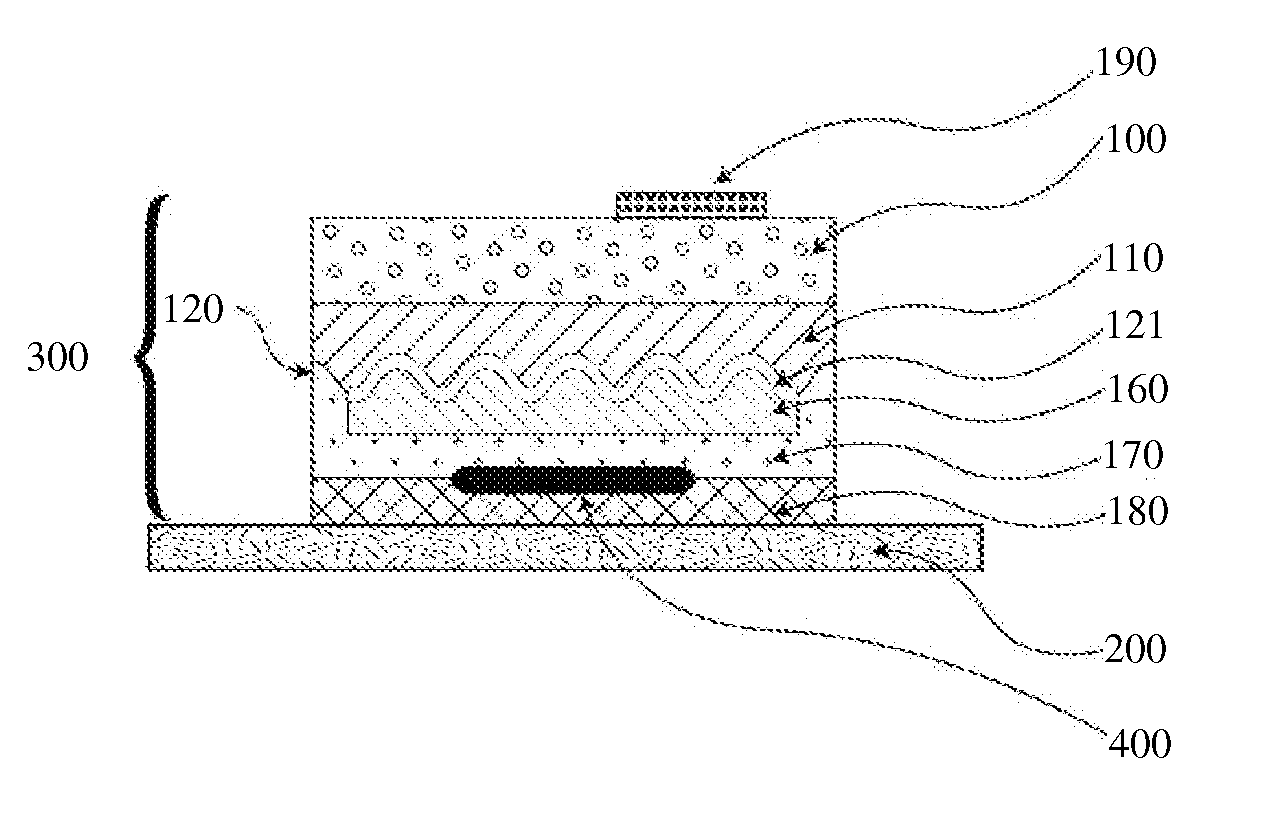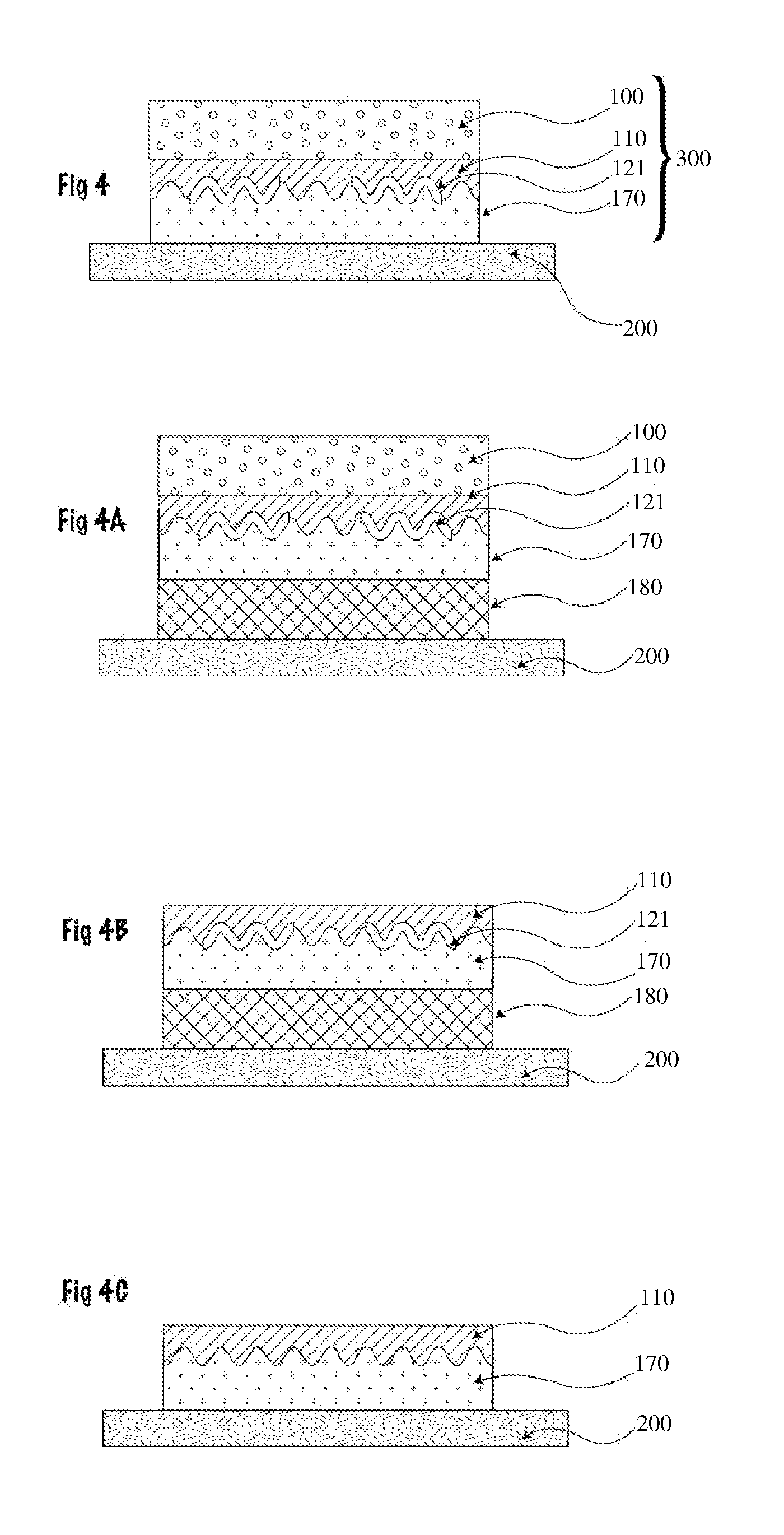Durable washable label having a visible diffraction grating pattern
- Summary
- Abstract
- Description
- Claims
- Application Information
AI Technical Summary
Benefits of technology
Problems solved by technology
Method used
Image
Examples
Embodiment Construction
[0047]Reference should be made to the drawing figures, on which similar or identical elements are given consistent identifying numerals throughout the various figures thereof.
[0048]FIG. 1 illustrates a sectional view of a holographic element 10, typical of the instant invention. An adhesive film base substrate 100 has disposed thereon a layer of essentially transparent oligomeric resin 110 that is cured while in intimate contact with a holographic stamping tool 130. Layer 100 is composed of one or more of the polymerfilm. The holographic replicating tool 130 imparts a holographic microstructure pattern 120 to the oligomeric resin, creating a negative pattern 120 in the surface of the resin. Once the resin layer 110 has been cured and the holographic stamping tool 130 has been removed, the pattern 120 remains fixed in the top surface of said resin.
[0049]FIG. 2 illustrates holographic element 120, wherein a thin layer of a reflective material such as aluminum 121 has been affixed to t...
PUM
| Property | Measurement | Unit |
|---|---|---|
| Thickness | aaaaa | aaaaa |
| Thickness | aaaaa | aaaaa |
| Pressure | aaaaa | aaaaa |
Abstract
Description
Claims
Application Information
 Login to View More
Login to View More - R&D
- Intellectual Property
- Life Sciences
- Materials
- Tech Scout
- Unparalleled Data Quality
- Higher Quality Content
- 60% Fewer Hallucinations
Browse by: Latest US Patents, China's latest patents, Technical Efficacy Thesaurus, Application Domain, Technology Topic, Popular Technical Reports.
© 2025 PatSnap. All rights reserved.Legal|Privacy policy|Modern Slavery Act Transparency Statement|Sitemap|About US| Contact US: help@patsnap.com



